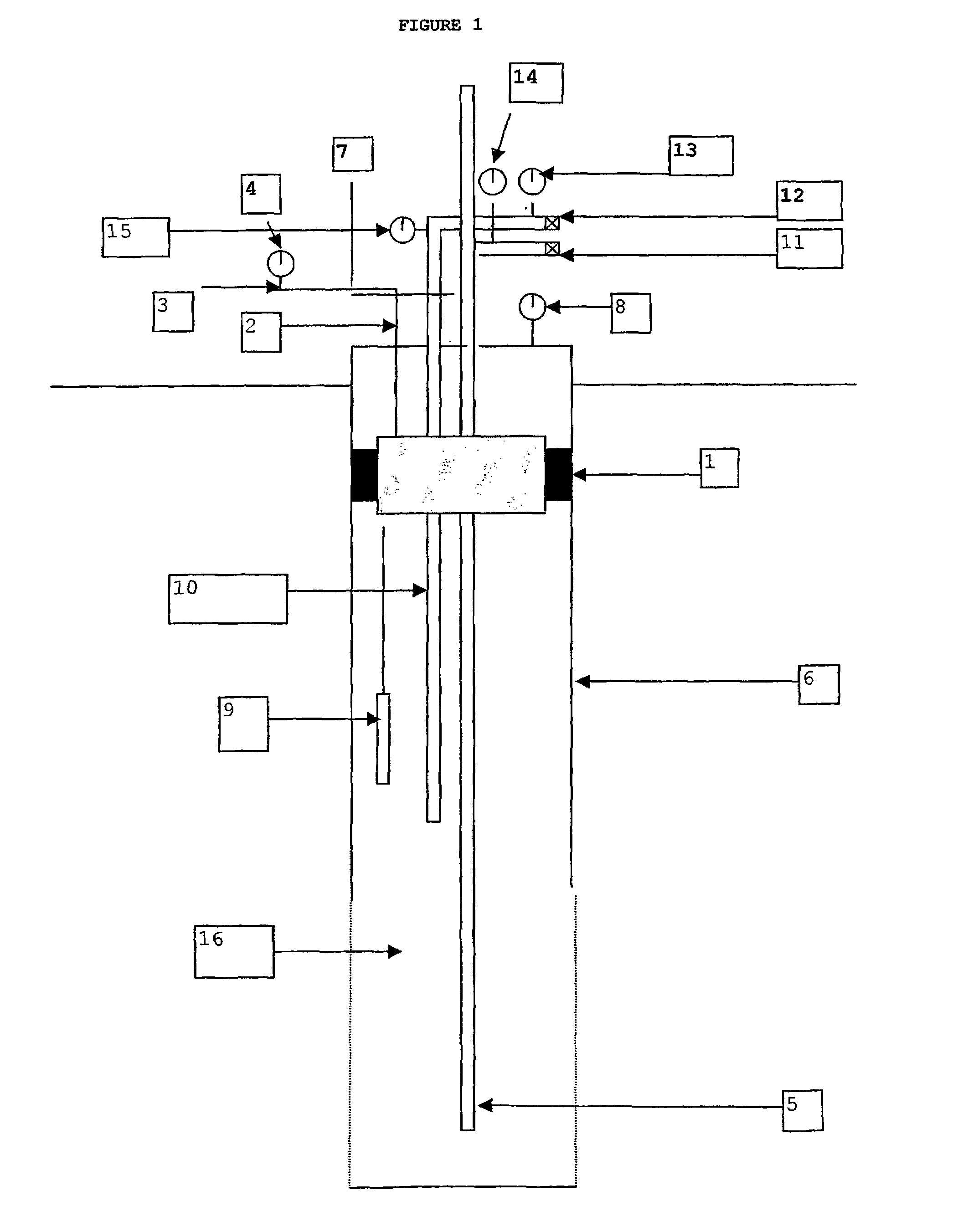Method for stimulation of liquid flow in a well
a well and liquid flow technology, applied in the field of water wells, can solve problems such as potential danger, and achieve the effects of less co2, effective and efficient, and better manipulation of materials
- Summary
- Abstract
- Description
- Claims
- Application Information
AI Technical Summary
Benefits of technology
Problems solved by technology
Method used
Image
Examples
Embodiment Construction
[0018]Prior to any work to be performed to increase the output of a dry or inefficient well, it is necessary to evaluate the aquifer and the type of problem in the well. This is so because every well is slightly different from any other well in terms of physical characteristics and properties and the type of problems presented in water flow. Additionally, the amount of injection of energy during the process disclosed in U.S. Pat. No. 5,394,942 can vary depending upon well design, well problems, well construction, and site considerations. Hence, before any type of work is to be done on a dry or inefficient well, the practitioner is to gather information about the history and characteristics of the well. Such evaluative information is contained within geophysical logs or drillers logs, analysis of the chemistry of the water contained within the well, analysis of the groundwater microbiology, downhole video images, and from other information sources that may exist. By proper informatio...
PUM
| Property | Measurement | Unit |
|---|---|---|
| pressure | aaaaa | aaaaa |
| pressure | aaaaa | aaaaa |
| pressure | aaaaa | aaaaa |
Abstract
Description
Claims
Application Information
 Login to View More
Login to View More - R&D
- Intellectual Property
- Life Sciences
- Materials
- Tech Scout
- Unparalleled Data Quality
- Higher Quality Content
- 60% Fewer Hallucinations
Browse by: Latest US Patents, China's latest patents, Technical Efficacy Thesaurus, Application Domain, Technology Topic, Popular Technical Reports.
© 2025 PatSnap. All rights reserved.Legal|Privacy policy|Modern Slavery Act Transparency Statement|Sitemap|About US| Contact US: help@patsnap.com

